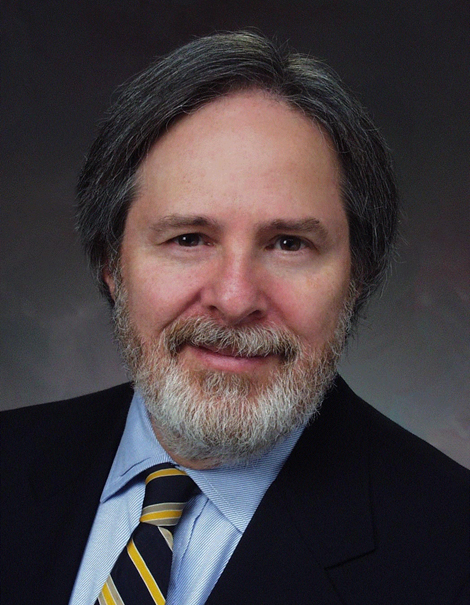On May 31, 2012, in InDyne, Inc. v. Abacus Technology Corporation et al., Judge Anne C. Conway of the Middle District of Florida granted the defendant’s motion for summary judgment on the plaintiff’s copyright infringement claim on the grounds that the plaintiff had failed to preserve the software source code at issue as it existed on the date of its publication.
More specifically, the court ruled that plaintiff InDyne, Inc., an outgoing federal contractor at NASA’s Kennedy Space Center, could not meet its burden of proving that defendant Abacus Technology Corporation had copied its proprietary software because an intact and original copy of the source code was required for purposes of showing “substantial similarity” between the allegedly offending work and the protectable, original elements of InDyne’s copyrighted work. As InDyne was only able to produce a version of the proprietary source code that had been modified many times throughout the course of its contract with NASA, which commenced after the software’s publication date, the court held that the plaintiff had failed to raise a genuine issue of material fact with regard to its copyright infringement claim.
Prior to bringing a copyright infringement claim, a party must register its allegedly copied software for copyright.1 The application for copyright registration must include a deposit consisting of a bona fide copy of the original source code as of the publication or completion date.2 Copyright registrations are often filed years after the completion date—or if published, years after the publication date. However, to ensure that a party claiming copyright infringement can meet its evidentiary burden, it is important to take steps to preserve a copy of the code as it existed on the original date of publication or completion. If one fails to do this, it will be impossible years later to produce a bona fide copy of the original code, which will in turn foreclose the plaintiff’s ability to bring suit for copyright infringement.
Invalid Copyright Registration versus Case at Bar
Challenging the validity of a plaintiff’s copyright registration is a potentially effective strategy for any party accused of copyright infringement. If a court finds that the registration is invalid, the court will be forced to dismiss the infringement suit.3 In InDyne, however, the court assumed that InDyne complied with all applicable statutory requirements for registering its software for copyright.4 Instead, the court chose to focus on Abacus’s alternative argument that InDyne had failed to “come forward with sufficient evidence to rebut Abacus’s contention that there is an absence of evidence to prove substantial similarity between the allegedly offending work and the protectable, original elements of the copyrighted work.”5 A court will find a copyright registration invalid if the defendant successfully demonstrates that the registration certificate contains material errors.6 While immaterial errors, such as inaccurately stating the date of the work’s creation or failing to list pre-existing works or coauthors, are not grounds for invalidating a registration, the failure to submit a “proper deposit copy” is deemed a material error, and therefore can invalidate the entire copyright registration.7 A copyright registration of a computer program would ideally include either an original copy or a bona fide copy of the program.8 An original copy would consist of a clean, non-updated, unaltered copy of the software source code as it was originally published. This original copy would have been created at the time of the initial creation or publication and stored appropriately to ensure its authenticity.
Having assumed that InDyne possessed a validly registered copyright, the InDyne court instead relied upon the defendant’s argument that InDyne had failed to produce an intact and original version of the software source code for purposes of comparison with the allegedly infringing work. This analysis hinges on the second prong of the Feist test —“copying of constituent elements of the work that are original.”9 InDyne was only able to produce source code that had been modified many times after the publication date, as the source code was changed and updated throughout performance of InDyne’s contract with NASA at the Kennedy Space Center.10 Because the August 2003 publication date of InDyne’s source code at issue pre-dated InDyne’s September 2003 engagement with NASA, any mention of the Kennedy Space Center in InDyne’s source code confirmed modification subsequent to the publication date.
In order to determine whether “copying of constituent elements of work that are original” has occurred, a trier of fact must have a copy of the original code as it existed at the time of publication for comparison with the allegedly infringing work.11 Because InDyne did not possess such a copy, the court held that InDyne could not rebut Abacus’s contention that the evidence needed in order to perform a substantial similarity test no longer existed.
DisputeSoft’s Role in the Litigation
The court focused on one key fact in this case before granting Abacus’s motion for summary judgment—InDyne’s failure to preserve a copy of its source code as it existed at the time of its publication in 2003 before InDyne’s engagement with NASA began at the Kennedy Space Center.
The expert opinion and analysis of Jeff C. Parmet, the founder of DisputeSoft LLC, proved critical to the court’s finding that InDyne was unable to produce a version of source code as it existed on the date of publication for comparison with Abacus’s allegedly infringing source code. Mr. Parmet demonstrated that InDyne only possessed a version of source code that had been modified numerous times during InDyne’s performance of its contract with NASA. More specifically, Mr. Parmet’s expert report showed that the InDyne source code at issue contained over 95 references to InDyne’s 2003 NASA contract.12 Because the date of publication for the source code was August 2003, and because InDyne’s engagement with NASA began in September of 2003, there would not have been any mention of InDyne’s contract with NASA in the code had it been properly preserved.
Mr. Parmet also demonstrated that 36% of InDyne’s source code files had last-modified dates after the publication date.13 While the defendant did not dispute that some degree of copying had in fact occurred, the court found that InDyne could not prove which portions of the source code at issue were part of the original work and which portions of the code were modified during InDyne’s engagement with NASA.14 InDyne’s source code, taken together with Mr. Parmet’s expert report, persuaded the court that InDyne would not be able to satisfy its burden of proof on summary judgment. Therefore, the court ruled that InDyne would not have been able to satisfy the second prong of the Feist test for copyright infringement—i.e., a showing that “copying of constituent elements of the work that are original” had occurred—had InDyne been permitted to proceed with its case.15
—
[1] 17 U.S.C. § 411; Quincy Cablesystems, Inc. v. Sully’s Bar, Inc., 650 F.Supp. 838, (D. Mass. 1986); Burns v. Rockwood Distrib. Co., 481 F. Supp. 841 (N.D. Ill. 1979).
[2] 17 U.S.C. § 408
[3] Torres-Negrón v. J&N Records LLC, 504 F.3d 151, 160 (Puerto Rico 2007).
[4] InDyne Order, p. 11.
[5] Id.
[6] Torres-Negrón, 504 F.3d at 160. The party may also show fraud or that the application is incomplete.
[7] Id. at 158.
[8] In order to preserve the option of winning statutory damages and attorneys’ fees in an infringement suit, the registration should be made within three months of publication. See 17 U.S.C. § 412.
[9] Feist Publ’ns, 461 F.3d at 1320.
[10] InDyne Order, p. 4.
[11] Id.
[12] Id.
[13] Id.
[14] Id.
[15] Feist Publ’ns, 461 F.3d at 1320; InDyne Order, p. 25.

Jeff Parmet (1946 – 2023)
Jeff Parmet was a widely respected IT dispute resolution specialist who served as a consulting or testifying expert on more than 200 software-related disputes. Jeff served DisputeSoft clients in the capacity of software failure expert, software intellectual property expert, Internet/E-commerce expert, or computer forensic and electronic discovery expert, depending on the requirements of the particular matter. The hallmark of Jeff’s practice was independent and objective technical consulting services leading to advice and/or expert witness testimony involving information technology.








